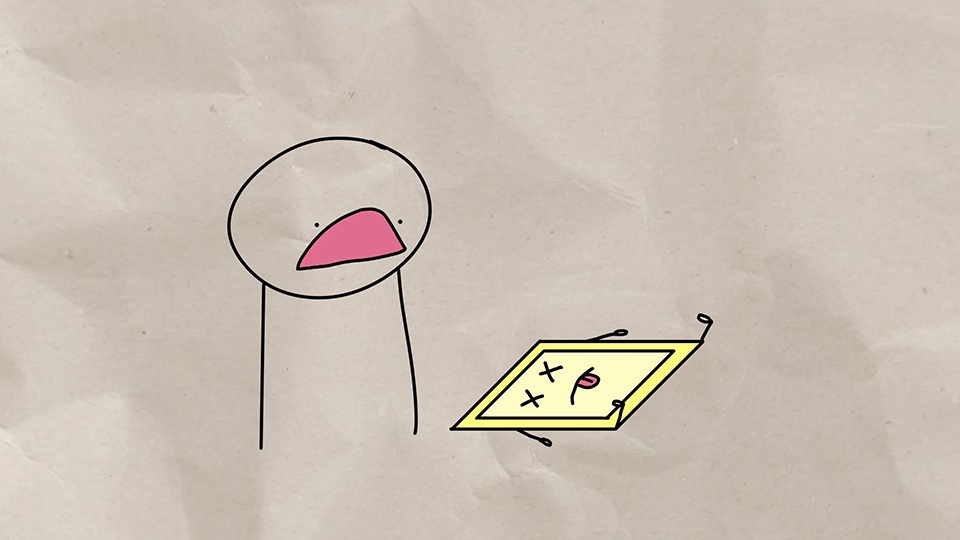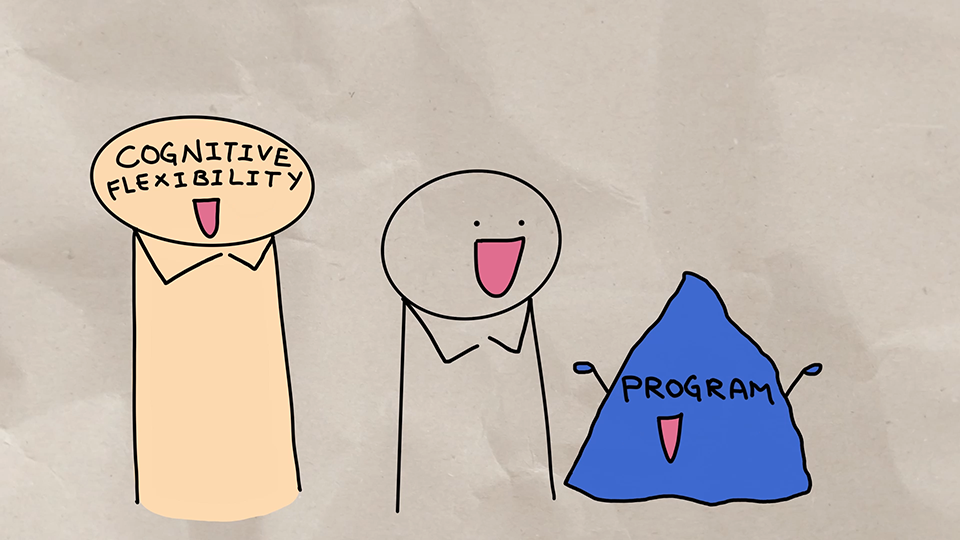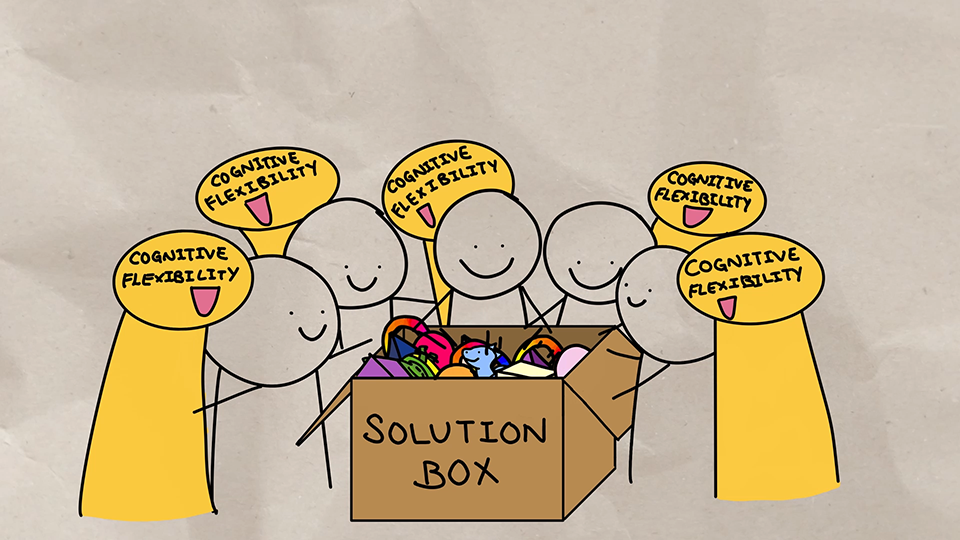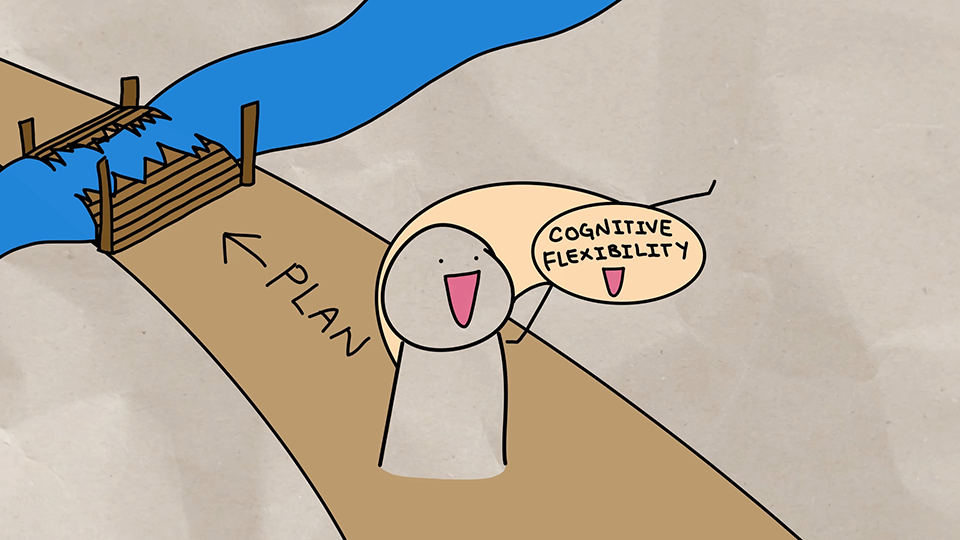Step back and expand your outlook
Some of your peers have joined the workshop because they've been struggling with new software tools that their organization has recently introduced. They share their apprehensions about not being able to do their jobs as efficiently as before because they might never be able to master the new tools. You need to help them overcome their mental blocks about their capabilities by expanding their cognitive flexibility.
Step back
People often approach a task with a specific plan in mind. It could be a detailed plan for a complex task. Or it could be a subconscious plan that's been formed out of years of habit from doing a task in a certain way.
Creating a plan requires a great deal of mental energy, focus, and direction. So, if a plan fails, the feeling of failure can be overwhelming and might leave you disillusioned. Despite the time and effort you invested in a plan, it's important to be able to step away from it when it no longer serves your end goal. Can you think of a time where you had to give up on a plan and wished you'd let go of it sooner?

Viewing a problem from various perspectives can help you generate multiple paths forward or even reveal a flaw in your approach.
Expand your outlook
One of the key aspects of developing cognitive flexibility is the ability to expand your outlook. When you meet a roadblock, it helps to stop, rethink the problem, and come up with an alternative plan.
For example, consider the debugging feature in a code development environment. When you get errors while you run your code, you can set a breakpoint to pause. You can then step back, step over, or step into your program's execution line by line to determine which part of the code is causing the error. This process makes it easier for you to troubleshoot and resolve the errors. Similarly, by stepping back to acknowledge what you did right and to recognize where you need to improve or make changes, you're stretching your cognitive flexibility.

Pause and assess
When you get stuck, it's important to pause and reassess your plan. To support others, give them a moment before helping them with a tip. You can also help them develop their cognitive flexibility by asking questions like:
What part of the plan isn't working for you?
Would it help if you asked for clarification or for help?
Is there anything you'd want clarified?
Can you name what's difficult? Is it trying to understand the problem setup, or the nature of the activity?
Note
In a cognitive flexibility exercise, all ideas can be presented, and there are no bad ideas.

Rethink your strategy
After you pause and step back from a setback, take the time to rethink your strategy by applying these guidelines:
Reevaluate your plan. Would it help to approach the problem from a different angle or vantage point? Sometimes, considering a problem from several different perspectives can open new paths for resolution.
Change your goal orientation. Understanding your primary objectives towards a learning task can help you overcome your challenges. Thinking about your own goal orientation and the goal orientations of others can help you better understand differences in motivation, effort expended, and persistence that you might observe.
Note
Goal orientation refers to the purpose with which you approach a learning task, whether it's a course or a particular project. Goals can be mastery-based or performance-based.
Are you interested in a mastery-based goal, where you want to learn for the purpose of improving and mastering your skills in a technical area? Or is your goal performance-based, where you're interested in learning the skill to get a promotion or to pass a course?
The following table provides some tips to help you rethink your strategy.
| Tip | Examples |
|---|---|
| Be open. | What assumptions are you making about the problem? What if you didn't assume that? |
| Try different perspectives. | Is there another vantage point? Who could you enlist to give you another perspective? |
| Generate multiple paths. | Is there another way to think about this? Remember, there are no wrong answers here. |
| Summarize the goals. | Do you feel those goals have been met? Do you have new goals for your tech pathway? |
| Reevaluate goals and mindset. | Are you approaching the issue with a fixed mindset? Are you focusing on a performance-based goal versus a mastery-based one? |
You can also enhance your cognitive flexibility by:
Seeking out new experiences.
Practicing creative thinking.
Not always taking the easy way.

When you're in a position of helping your peers, you can use the following strategies to help them grow their cognitive flexibility:
Understand the goals of the activity or program and the participants. Understanding how their needs align to the goal of the activity or program will help you to help them build their technical resilience.
Recognize your strengths and weaknesses. No one is perfect. You can embody the values of tech resilience and stretching cognitive flexibility by sharing your own experiences with navigating challenges.
Cultivate an inclusive space. People have a diverse set of needs and experiences. Be intentional in creating a place where everyone has the tools they need to contribute and feel valued.
Practice active listening. Focus on how you can best support your peers by being present and interested in helping them make progress in their goals. For all content, use the following prompt to invite others to share: "Would you be willing to take a minute to share? You can always pass if you’d like."
Assume positive intentions. Not everyone expresses their enthusiasm or interest in the same way. Try not to assume you know why some people aren't as engaged as others. Instead, do your best to match your guidance with each of your peers' personal styles and needs.
Provide effective feedback. Ensure your feedback reinforces the recipient's self-confidence and provides the tools they need to overcome their hurdles.